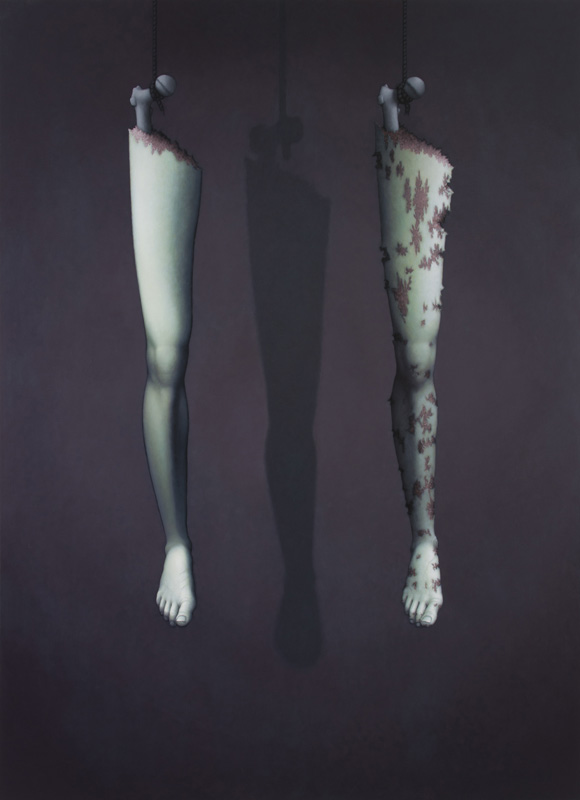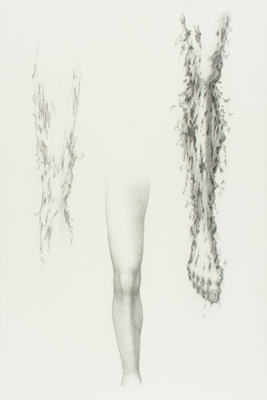
 |
| Trinity 1996, acrylic on canvas 66 x 48 in. |
Trinity |
Trinity follows my tradition of periodically creating minimal works instead of highly complex ones. In them I simplify the compositions as well as other aspects of the picture like the space, colors, and light sources. This typically results in works that possess a directness and immediacy. In Trinity this allows the viewer to see in a single glance the painting's overall starkness and disturbing brutality. The composition of Trinity consists of three severed legs – two made of flesh and bone while the third is a shadow. They hang motionless in an empty and amorphous space by ropes tied to the ball joints of their femur bones. The scene creates a sense of mystery and prompts the unanswerable question. Who constructed this horrible tableau? Looking more closely one can see that the bluish-green flesh of the left leg is unmarred whereas the right one is decomposing and riddled with open sores. Sandwiched between them is the shadow leg formed by the merged shadows cast by the other legs being spot lit by two light sources coming from the upper left and upper right outside the canvas. It is also disturbing to see that both legs are right legs, meaning that more than one person contributed, willingly or not, to the scene. Like all of my work, Trinity focuses on the ideas of change, transformation, and transcendence, specifically as they relate to the human condition. This is evident in the relationship between the legs – the left leg represents life, the right leg, transformative decay, and the shadow leg, the transcendent spirit. Symbolically the three legs can be seen as alluding to the Holy Trinity – the left leg is the Father, the right leg, the Son, and the shadow leg, the Holy Spirit. |
 1996, acrylic on canvas 66 x 48 in. |
 1994, graphite on paper 12 x 8 in. (sheet: 12 x 8 in.) |
Lastly I would like to note that Trinity came about as an outgrowth of a sketch intended only as a visual exploration of how to depict decaying flesh. The sketch began with an image of a leg without any deterioration. Then, after adding a second and third leg with deterioration, I realized how they not only contrasted visually in an effective way they also supported my focus on change and transformation. This convinced me that together they would make for a compelling future work. - Brian Mains, July 2020 |